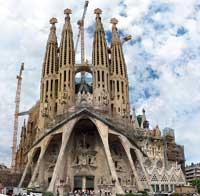
|
The Passion Facade, facing west (Image from Wikimedia Commons, facade in 2010)The Church will have three grand fašades: the Nativity fašade to the East, the Passion fašade to the West, and the Glory fašade to the South (yet to be completed). The Temple of the Sagrada Familia is in the shape of a Latin cross. One of the arms of the cross is the Nativity facade, the other the Passion facade. The Passion fašade was built after the project which Gaudi planned in 1917. Gaudí's plan stipulated a portico supported by six leaning columns. This relatively plain facade lacks decoration with emphasis totally on the sculptural groupings spaced along the facade. These sculptures focus on the last days of Jesus' life and are arranged chronologically, moving from the bottom left to the right, then right to left in the middle register, and then back right on the top level--in an enormous "S". The sculptural narrative and characters are striking for their simplicity and drama with angular facets conveying torment and pain.
|
| |
|
The lower level
|
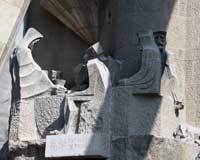
|
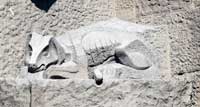
|
The Last SupperA dog is included usually interpreted as fidelity (Fido) since this is the moment when Christ recognizes Judas' betrayal.
|
| |
|
The Kiss of JudasThe snake, a traditional symbol of Evil or the Devil, is placed behind Judas. The cryptogram contains 16 numbers. "The sum of these, in 310 different combination, always add up to 33, Christ's age when he died" (Expiatory Temple 88).
|
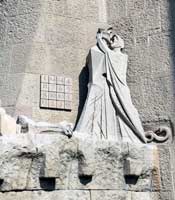
|
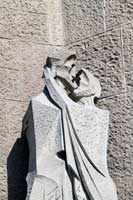
|
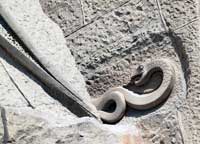
|
| |
|
The Denial of PeterThe three women may suggest the three times that Peter denied Christ. The rooster reminds us of the prediction that Peter would deny Jesus before the cock would crow. The sculptor has conveyed powerfully the shame that Peter feels with the cloth and the pose.
|

|

|
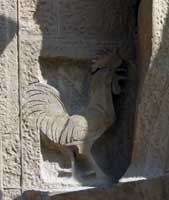
|
| |
|
Ecce Homo: Christ presented to the people wearing a crown of thorns |

|
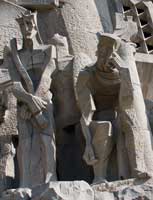
|
| |
|
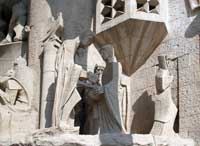
|
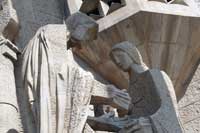
|
Pilate washing his hands
|


 Go to Gaudí Index.
Go to Gaudí Index. Click here to return to index of art historical sites.
Click here to return to index of art historical sites.
 Click here to return to index of artists and architects.
Click here to return to index of artists and architects.
 Click here to return to chronological index.
Click here to return to chronological index.
 Click here to see the home page of Bluffton College.
Click here to see the home page of Bluffton College.

